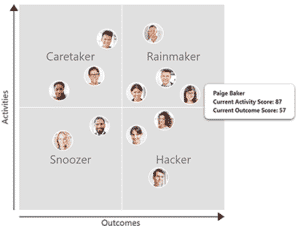How and Why to Eat Your Own Dog Food

To Sales Reps – Eat Your Own Dog Food, it’s Good For You
Eat Your Own Dog Food is a colloquialism that describes a company using its own products or services for their internal operations. The term is believed to have originated with Microsoft in the 1980s. Those were the days of Gordon Gecko, “Greed is Good” and aggressive sales cultures. These days people prefer the phrase “drink your own champagne”.
Whatever the phrase, one of the greatest joys of any sales rep is being able to say that they use the product they are trying to sell to customers every day.
“Dogfooding” or “champagne drinking” has many advantages for reps:
- they know the product intimately and can talk about its benefits from an authoritative standpoint
- they know the setup process of their product and the glitches that might occur. They can guide new customers through installation and ongoing use
- they know the product development plan and can alert customers to new features and functionality
- they will not experience call reluctance as they know the product and are confident in talking about it with customers and prospects
- customers are reassured that the product is indeed a good fit for their business
- customers can hear about the problems and solution the rep’s company overcame by using their own product and apply it to their environment
- customers have access to expert users for advice and guidance when pitching the idea to their stakeholders for approval.
Benefits for Other Internal Divisions
The most commonly discussed benefit of “dogfooding” is the ability to catch bugs or glitches before a customer experiences them, and fix the code. If you are using your product frequently and engaging with all aspects of it, there is an increased likelihood that you will encounter an action that causes problems in the production environment. Fixing these issues means a smoother installation and use for the customer.
“Dogfooding” isn’t just about bugs. The sales rep is probably a lot like their customers and so they will have first-hand knowledge of the user experience. They can advise product development if the UX feels unnatural if there are obscure messages or too many clicks to get to the right place. Internal feedback should always be taken seriously. Everyone in the company wants the product to succeed, and to have delighted customers that continue to grow. Feedback goes a long way towards making the product better and therefore easier for you to sell.
A Cautionary Tail
With great upsides come a few things to be wary of:
- nobody uses the product as much as you do. So everything that you’re used to, the layout of the interface, the features, maybe forgotten or assumed when you talk to a potential customer. It’s also likely that you’ve developed workarounds where the product performs poorly and you might neglect to mention some of these to a potential customer.
- you might not be who the product was built for. A tiny startup doesn’t have the same requirements or usage that a Fortune500 corporation will have a product. Building something that meets all internal needs may cut your potential market.
- don’t ditch ways to engage regular external feedback. Fresh eyes and different problem applications mean customers regularly run into issues that you have not encountered or anticipated.
Spinify Drinks it’s own Champagne
Every person in Spinify has the metrics they need to achieve. This ranges from our developers, through admin to sales and management. The metrics of sales staff for example are shown on multiple leaderboards such as calls, emails, and of course sales deals. Spinify uses the Salesforce CRM so as soon as the field in Salesforce is updated then the performance is displayed on one of the many TVs we have in the office. The developer leaderboards are tracking cards completed and everyone’s performance has been mapped to the Performance Grid.

Conclusion – Eat Your Own Dog Food
Dogfooding has become essential to creating great, reliable software. If you aren’t using your own product at your workplace, it isn’t too late to start. You’ll be surprised how many things you’ll find that had been previously overlooked.

Check out our social media pages for Spinify news and updates: LinkedIn & Twitter
Put those insights into practice.
Set your team up for success by improving their performance through gamification.
Back to blog







